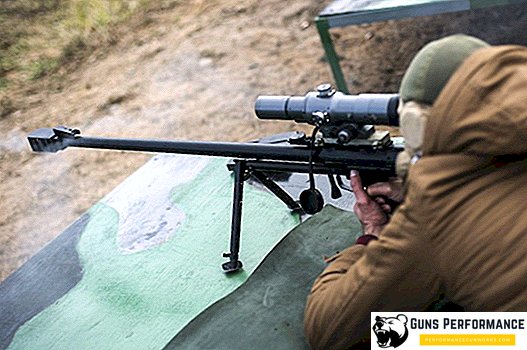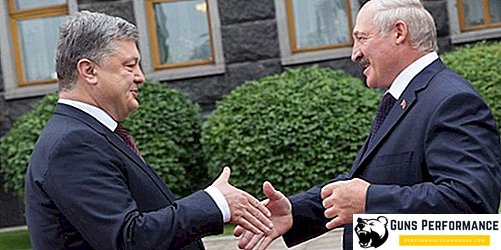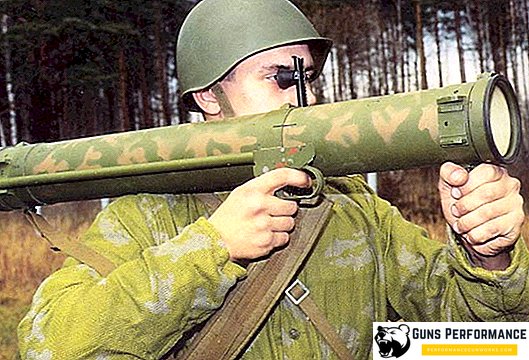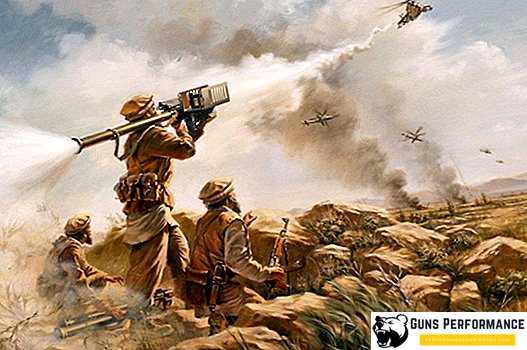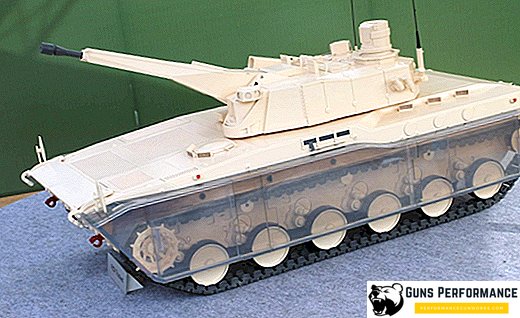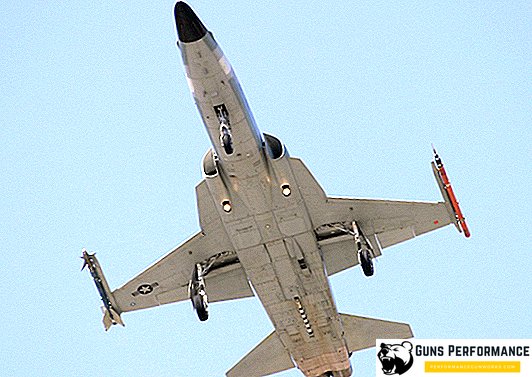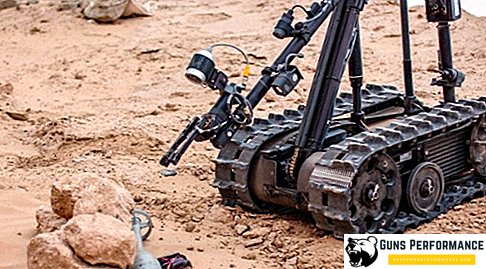A combat knife is one of the first weapons that a man began to use. Years passed, historical epochs changed, people learned to use new materials for their needs, improved the ways of their processing, after the era of stone came the age of metal. But the combat knife remained loyal friend of the man, the hunter and the warrior.
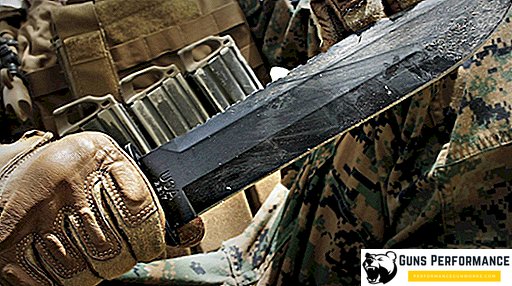
Modern knives have since little changed functionally. Of course, modern cold steel weapons are made of perfect materials, taking into account all the requirements of ergonomics - but these weapons have not undergone fundamental changes.
There is an opinion that the value of cold arms in modern warfare has decreased to almost zero. There is some truth in this, the time of bayonet attacks has long passed. However, the value of cold arms (primarily combat knives) during special operations does not decrease.
The modern world is a series of local conflicts, hybrid wars and guerrilla warfare, in which special units take the lead. Soldiers of the mass armies of the Cold War also had individual cold arms, for example, in the Soviet army it was a bayonet, but it can hardly be called the standard of a combat knife, and it is usually used by military personnel for various everyday functions.

It should be noted that a bayonet knife could hardly serve as a good fighting knife. The fact is that the knife and the bayonet are too different from each other, they are created for different purposes. The bayonet is mounted on the barrel of the weapon, the strike is done with both hands at once, the body weight of the soldier and the weight of the weapon are involved in it. Therefore, the bayonet and do not need to be too sharp. There are very different requirements for a combat knife.
This combat knife is a true artwork. It counted everything: blade length, handle shape, sharpening and balance. Knife fighting is a real skill that you need to learn for a long time. Knife as a weapon of direct contact is perfect for special forces soldiers.

Combat knife and its features
The combat knife has not only specific characteristics, but also has a special legal status that distinguishes it from household, hunting, dressing and other types of knives. The storage, use and sale of such knives in most countries is regulated by law. Such attention from the law is based on one very important circumstance: combat knives are a type of cold arms designed specifically for killing a person.

The designs of combat knives may be different, their appearance may vary, but their manufacture always takes into account the basic principles and features that allow this type of melee weapon to perform its functions:
- The handle of a combat knife should have an ovoid or oval cross-section; it should not be round. The reasons are very simple: firstly, the handle of this form is more comfortable in the hand, and secondly, the fighter can feel the position of the blade at the time of its use.
- In addition, the handle of the combat knife should not slide in your hand. Today for linings often use different types of plastic, perfectly meeting this requirement.
- For a combat knife, double-sided or one-and-a-half sharpening is desirable. Using a knife in combat is much more effective if the fighter can use both sides of the blade without turning it over.
- For a combat knife, the width of the blade is important, it must be at least 2.5-3 cm. In this case, the width of the blade descent reduces the angle of sharpening the blade, which increases its cutting properties. When stabbing with a similar knife, extensive wounds with profuse blood loss remain.
- Very important for a combat knife blade shape. The best option - leaf-shaped with a differentiated sharpening. This allows you to apply effective cutting and stabbing blows. Especially successful combination of differentiated and inverse sharpening. A combat knife may have a serrated sharpening.
- Combat knife necessarily has a limiter on the handle. This is necessary so that during the stabbing blow the hand does not slip on the blade. The handle with the limiter should be convenient for the fighter, the limiter (it is often mistakenly called the guard) should not be too large and interfere with intercepting weapons.
- No less important is the overall length of the combat knife. As a rule, such a weapon has a length of 18 to 30 cm. If the knife is shorter than this length, then in battle it will be more difficult for them to reach the enemy. A length of more than thirty centimeters makes the knife too heavy and uncomfortable. This length is quite sufficient for the lesion of the vital organs of the abdominal cavity and chest at any angles of impact. Too long a knife is easier to knock out from the hands of the enemy.
- Blade hardness This is one of the most important characteristics of a good combat knife, it should be made of quality steel with a hardness of at least 47-55 HRC. The hardness of the blade provides its good penetrating effect, it must be able to pierce clothes and, if necessary, push the fibers of a Kevlar body armor. However, the penetrating action of the combat knife depends not only on the hardness of the steel but also on the shape of its tip. In the 90s of the last century, experiments began to create blades of titanium and titanium alloys. The strength of these materials are superior to steel, have less weight, are not subject to corrosion. In addition, they have anti-magnetic properties, which is very important for divers working with underwater mines. But such materials have an unpleasant feature: sharpening very quickly loses its sharpness.
- For good penetrating power, for a stab blow, the point should coincide as much as possible with the axis of symmetry of the blade. That is, the knife's edge should not be shifted to the side; when striking, the maximum force should be focused on it. In hunting knives, the tip is usually shifted slightly up, which is caused by the specifics of their use.
- The weight of the combat knife should be 200-300 grams. A lighter weapon is difficult to inflict a serious and deep wound, but if the knife is too heavy, it will create difficulties in its use.
- The center of gravity of the combat knife should be located closer to the handle, and not to the edge of the blade, in this case it is much easier to use it.
- There are requirements for the sheath of a combat knife. They must be strong, lightweight, comfortable and firmly attached. Color tactical sheath (black or just dark). There should not be any fasteners to hold the knife in the sheath, they can prevent the weapon from being removed at the right moment. The knife should be kept in the sheath only due to the friction force, not to slip out and not to fall out at any position of the body. Weapons must be delivered without much effort. The sheath and its attachment should not interfere with the movements of the fighter and violate his disguise.
Nowadays, personal protective equipment against various dynamic damages is gaining more and more popularity. Punch them with a knife is quite problematic. Therefore, the main targets for the combat knife were not the internal organs of the enemy, but its open parts of the body (neck, face, forearms).
It is necessary to add that combat knives are not intended for throwing, for this purpose special throwing knives are developed, having a special shape, mass, size and balancing.


The design of modern combat knives
In recent years, so-called tactical knives have become increasingly popular with sellers and consumers. Many experts in the field of cold arms of the old school believe that this term is not entirely correct. A tactical knife is an instrument that can be used not only as a combat weapon, but also for domestic or business tasks.
Today, one of the trends in the development of combat knives has been the introduction of the most successful technical solutions taken from the so-called survival knives into their design. Another noticeable trend is the maximum simplification of the knife design. In addition, a modern combat knife should be adapted to different conditions of use and be versatile. That is, to perform not only combat functions, but also to be suitable for various tactical actions, without which it is difficult for a fighter to do in combat conditions.

A combat knife should be able to quickly cut a cable or wire, remove branches or other obstacles, handle a lock, dig a shelter, or open a can of canned food.
Before we talk about the most popular Russian and foreign combat knives, we should say a few words about the design of knives and the terminology used to describe them. And also about the most common forms of the blade and how to sharpen it.
Any knife consists of two parts: the blade (1) and the handle (2). The blade ends with the point (3), and the handle - top (10). At the bottom of the blade is a blade or cutting edge (4). On the side opposite the blade, the butt is located (6). Bevel, descent or thin section is called the surface, which tapers towards the blade of the blade (5). This surface is called the false bevel, if it does not end with a blade (for example, on the butt). It is designed to facilitate the blade. For the same purpose on the side surfaces of the blade make small grooves - valleys (7). In addition, they improve the balance of the knife, shifting its center of gravity closer to the handle.

Both valleys and false bevels are not very necessary for small and medium knives, often the manufacturer makes them for aesthetic reasons.
The bare part of the blade, located directly next to the handle, is called the fifth blade (8). In this part, the blade resembles an ordinary metal rectangle. The main part of the handle, for which the knife is held, is indicated by a cutting, between it and the blade there is a cross (9), which is often (and incorrectly) called a guard. Previously, the guard served not only to protect the hands in a duel, it could be used to block the enemy’s weapons. However, today, if the knife has a guard, but it is decorative.
The part of the blade inside the handle is called the shank. There are several types of mounting the handle on the shank. The back of the handle is called the top or the head. Sometimes a hole is made in the head and a lanyard is inserted into it.


Blade Shapes
Bowie. This is a classic form of combat knife, which was developed in the XIX century and is named after the Texan, the national hero of the United States. The blade has a tip that resembles a duck nose. Butt blade in most cases also has a sharpening, it can be straight or curved. In its penetrating action when striking the blade, the "Bowie" blade resembles a classic dagger.
"Tanto". This form of the blade is of Japanese origin, and now it is extremely popular among fans of cold weapons. The main difference between these knives is the high resistance of the blade tip, which is remarkable for its massiveness. Because of this, the blade can be used as a universal tool and pierce them with serious obstacles without risking to break it. Today there are two types of sharpening for the shape of "Tanto": with a concave or wedge-shaped sharpening on both sides or sharpening that resembles a chisel.
"Drop Point". Blade drop-shaped, as a rule, without sharpening on the butt. Such knives are more like hunting, they were designed as a tool, not a weapon.
"Dagger". The classic form of the blade with four-sharpening, it is perfect as a weapon, but these knives are not too good as tools. A symmetrical knife, sharpened on both sides, allows the fighter to perform a variety of tactical maneuvers. It is great for stabbing, has a high penetrating effect. The blade is very light, well balanced.
"Spear Point". Another example of the shape of the blade, which provides high stability of the tip. It really looks like a spearhead, although the upper butt edge on the butt is not sharpened and is fake. The edge of the knife is almost on the middle line or shifted slightly up. This form of the blade is more suitable for combat work and not very effective as a tool.
Hawkbill Form. Knives with a blade of a similar form are more suitable as a tool than for combat use. Sickle blade shape is well suited for cutting ropes, ropes and belts. For stabbing the blade of this form is hardly suitable.


Typical forms of sharpening
Wedge sharpening. The classic form of sharpening, which is well suited for blades experiencing significant stress. Such a knife can be used not only as a weapon, but also as a tool. Blade from the blade evenly thickens up.
Dolovaya sharpening. Made in the form of a narrow and very thin blade, which cuts perfectly and is distinguished by high sharpness. Such sharpening is also called shaving. However, there is a negative side to this: this blade is less durable than with a wedge-shaped sharpening. Usually such knives have a massive butt that provides strength to the blade. Knives with a wedge-shaped sharpening are designed exclusively for cutting, it is extremely problematic to use them as a tool.
Sharpening in the form of chisel. Such sharpening is used in Japanese kitchen knives, and it is a one-sided wedge-shaped sharpening. There are disputes as to which side it is best to do, from the right or the left. When working it is necessary that the sharpened side was on top. This is how the chisel carpenter works. It turns out that these knives need to be done separately for left-handers and for those who have a better right hand.
Convex sharpening. This type of sharpening is rarely used for combat knives, most often it is used for sharpening axes. Knives, which use a convex sharpening, most often used as hacksaws.


What can be used combat knife
A modern combat knife is not only a weapon, but also a tool designed to perform various tasks. As experience shows, more often than not a soldier needs a knife not to injure or kill an enemy, but for more prosaic operations.

Equipment firing position. This is the most important task in a combat situation that needs to be performed competently and as quickly as possible. With the help of a tactical knife, you can quickly remove various obstacles covering the firing sector or blocking the review. It can be branches, curtains, sheds. Knife fighter can use and digging, but for this to be high strength blade.
Exemption in extreme situations. During combat operations, a fighter may become entangled in ropes or cables, in such cases his life depends on the knife. This can occur during the descent from the wall of the house, from a helicopter, during the air landing.
Exemption from handcuffs. In recent years, not metal handcuffs, but made of plastic, are increasingly being used. They are usually cut with pliers. A good knife will also cope with this obstacle; wave sharpened knives are especially well suited.
Elimination of obstacles under water. A good knife is very often a matter of life or death for employees of special naval units. For underwater saboteurs and divers, fishing nets are one of the most dangerous threats. The knife can easily solve this problem, saving the person life.




